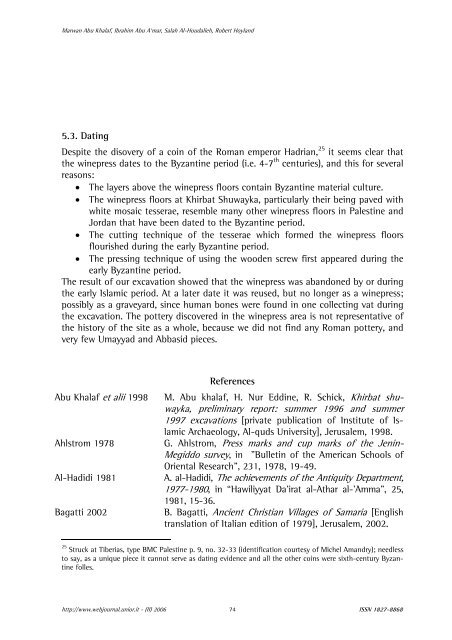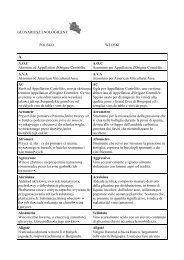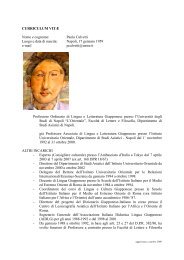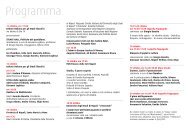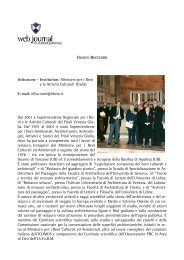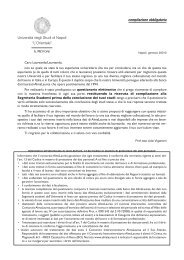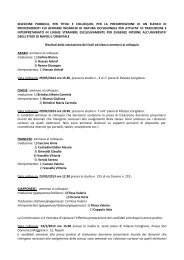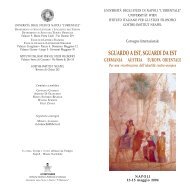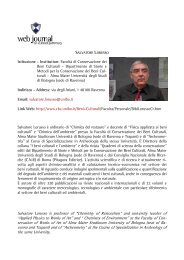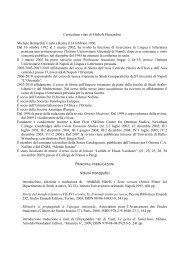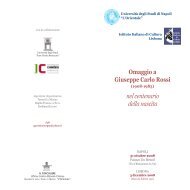The Byzantine and Early Islamic settlement of Khirbat ... - web journal
The Byzantine and Early Islamic settlement of Khirbat ... - web journal
The Byzantine and Early Islamic settlement of Khirbat ... - web journal
You also want an ePaper? Increase the reach of your titles
YUMPU automatically turns print PDFs into web optimized ePapers that Google loves.
Marwan Abu Khalaf, Ibrahim Abu A‘mar, Salah Al-Houdalieh, Robert Hoyl<strong>and</strong>5.3. DatingDespite the disovery <strong>of</strong> a coin <strong>of</strong> the Roman emperor Hadrian, 25 it seems clear thatthe winepress dates to the<strong>Byzantine</strong> period (i.e. 4-7 th centuries), <strong>and</strong> this for severalreasons:• <strong>The</strong> layers above the winepress floors contain <strong>Byzantine</strong> material culture.• <strong>The</strong> winepress floors at <strong>Khirbat</strong> Shuwayka, particularly their being paved withwhite mosaic tesserae, resemble many other winepress floors in Palestine <strong>and</strong>Jordan that have been dated to the <strong>Byzantine</strong> period.• <strong>The</strong> cutting technique <strong>of</strong> the tesserae which formed the winepress floorsflourished during the early <strong>Byzantine</strong> period.• <strong>The</strong> pressing technique <strong>of</strong> using the wooden screw first appeared during theearly <strong>Byzantine</strong> period.<strong>The</strong> result <strong>of</strong> our excavation showed that the winepress was ab<strong>and</strong>oned by or duringthe early <strong>Islamic</strong> period. At a later date it was reused, but no longer as a winepress;possibly as a graveyard, since human bones were found in one collecting vat duringthe excavation. <strong>The</strong> pottery discovered in the winepress area is not representative <strong>of</strong>the history <strong>of</strong> the site as a whol e, because we did not find any Roman pottery, <strong>and</strong>very few Umayyad <strong>and</strong> Abbasid pieces.Abu Khalaf et alii 1998Ahlstrom 1978Al-Hadidi 1981Bagatti 2002ReferencesM. Abu khalaf, H. Nur Eddine, R. Schick, <strong>Khirbat</strong> shuwayka,preliminary report: summer 1996 <strong>and</strong> summer1997 excavations [private publication <strong>of</strong> Institute <strong>of</strong> <strong>Islamic</strong>Archaeology, Al-quds University], Jerusalem, 1998.G. Ahlstrom, Press marks <strong>and</strong> cup marks <strong>of</strong> the Jenin-Megiddo survey, in "Bulletin <strong>of</strong> the American Schools <strong>of</strong>Oriental Research", 231, 1978, 19-49.A. al-Hadidi, <strong>The</strong> achievements <strong>of</strong> the Antiquity Department,1977-1980, in “Hawiliyyat Da'irat al-Athar al-'Amma", 25,1981, 15-36.B. Bagatti, Ancient Christian Villages <strong>of</strong> Samaria [Englishtranslation <strong>of</strong> Italian edition <strong>of</strong> 1979], Jerusalem, 2002.25 Struck at Tiberias, type BMC Palestine p. 9, no. 32-33 (identification courtesy <strong>of</strong> Michel Am<strong>and</strong>ry); needlessto say, as a unique piece it canno t serve as dating evidence <strong>and</strong> all the other coins were sixth-century <strong>Byzantine</strong>folles.http://www.<strong>web</strong><strong>journal</strong>.unior.it - (II) 2006 74ISSN 1827-8868


